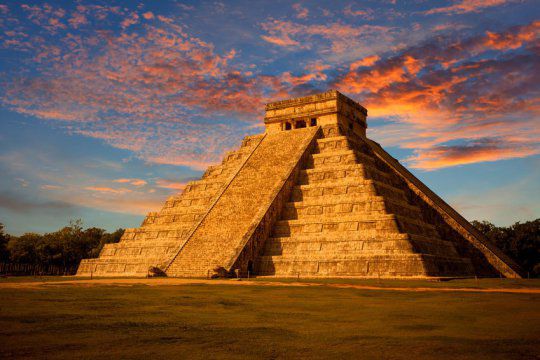How Shortages and Technology Doomed Maya Civilization
Published on by Water Network Research, Official research team of The Water Network in Academic
Model calculations by TU Wien indicate that the irrigation technology that served the Mayans well during periods of drought may have actually made their society more vulnerable to major catastrophes.
 Water reservoirs provide relief during short periods of drought. They can, however, make a society even more vulnerable to major catastrophes, if the population keeps growing without changing their habits. These models suggest that this could have caused the demise of the Maya civilization.
Water reservoirs provide relief during short periods of drought. They can, however, make a society even more vulnerable to major catastrophes, if the population keeps growing without changing their habits. These models suggest that this could have caused the demise of the Maya civilization.
Something really drastic must have happened to end the Classic Maya Period in the 9th Century.
Within a short period of time, this advanced civilisation in Central America went from flourishing to collapsing -- the population dwindling rapidly and monumental stone structures, like the ones built at Yucatán, were no longer being constructed.
The reason for this demise remains the subject of debate even today. Model calculations by TU Wien may have found the explanation: the irrigation technology that served the Mayans well during periods of drought may have actually made their society more vulnerable to major catastrophes.
The lessons learnt may also help us to draw important conclusions for our own future. We need to be careful with our natural resources -- if technical measures simply deal with the shortage of resources on a superficial level and we do not adjust our own behaviour, society is left vulnerable.
Socio-hydrology
"Water influences society and society influences water," says Linda Kuil, one of Prof. Günter Blöschl's PhD students of the Vienna Doctoral Programme on Water Resource Systems, funded by the Austrian Science Fund, at TU Wien.
"The water supply determines how much food is available, so in turn affects the growth of the population. Conversely, population increases may interfere with the natural water cycle through the construction of reservoirs, for example."
Since water and society have such a direct influence on each other, it will not suffice to describe them by separate models. This is why researchers at TU Wien explore the interactions between sociology and hydrology and represent them by coupled mathematical models.
The emerging field of socio-hydrology establishes mathematical interrelationships, e.g., between food availability and birth rate, or between recent water shortages that are still fresh in our memories and society's plans for building water reservoirs. These kinds of interrelationships, combined with a large amount of historical and current data, ultimately yield a complex system that produces different scenarios of human-nature interactions.
Sustainable use of resources
We will probably never know all the reasons for the decline of the Mayans. After all, wars or epidemics may have played their part too.
The socio-hydrological model developed by the Günter Blöschl-led team of researchers at TU Wien does, however, tell us that droughts and water issues are one possible explanation for their demise and shows us just how vulnerable an engineered society can be.
"When it comes to scarce resources, the simplest solutions on the surface are not always the best ones," Linda Kuil believes. "You have to change people's behaviour, reassess society's dependency on this resource and reduce consumption -- otherwise society may in fact be more vulnerable to catastrophes rather than safer, despite clever technical solutions."
Read full article at: Science Daily
Media
Taxonomy
- Environment
- Hydrology
- Social Hydrology
- Water
- Integrated Water Resources Management (IWRM)